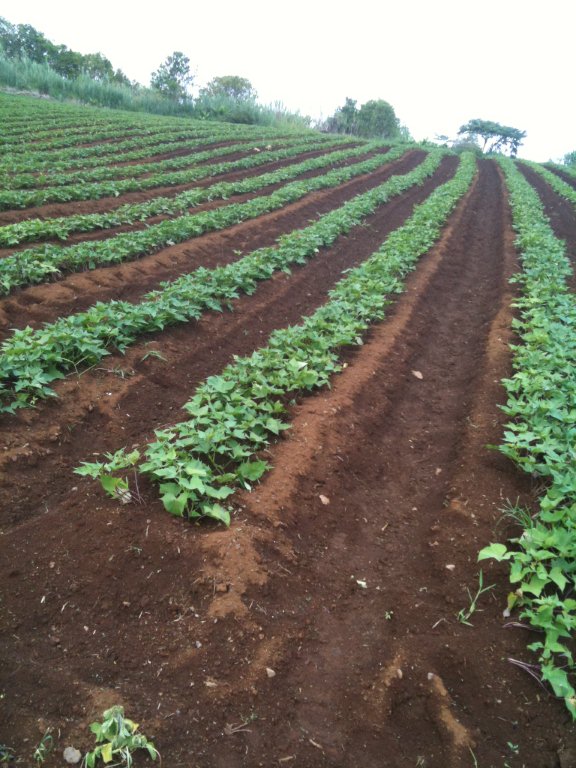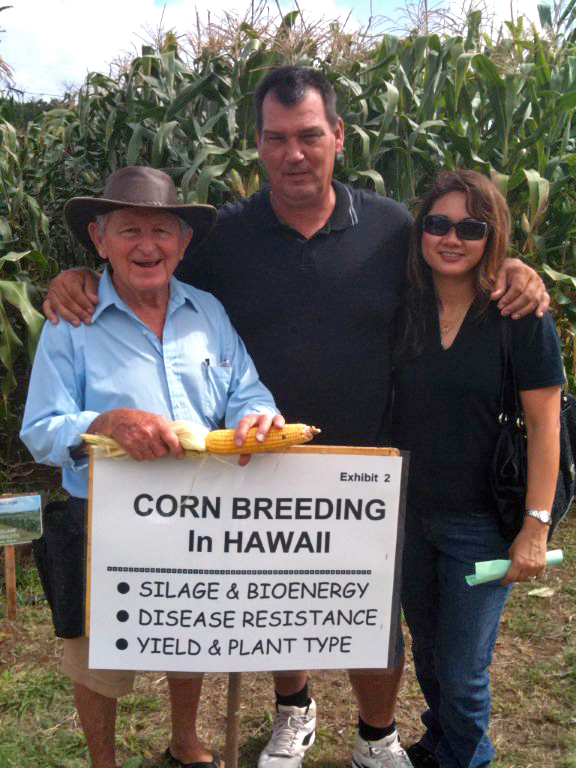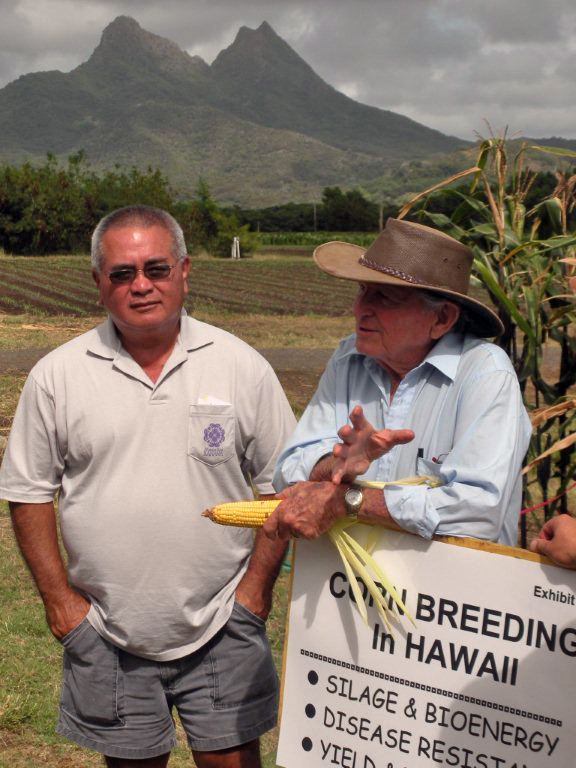We are preparing for a future of decreasing world oil supplies by transitioning from being the only producer on 600 acres of land at Pepe‘ekeo to being a model of multiple family farms.

And it’s growing. We now have one of the best sweet potato and ginger growers on the Big Island planting on our land. Following Tai Wan Gu in rotation is Daniel Loeffler, the Big Island’s premier corn grower. We are looking for one more crop to fit into the rotation; maybe some kind of grain to make pelletized animal or fish food.

Last Wednesday, Daniel told me that there was going to be a field day at the Waimanalo Research Station on Saturday. He told me that the famous corn breeder, Dr. James Brewbaker, would give a talk and that there would be a tasting of new corn varieties. So June and I decided to take a break and go to the field day.

Dr. B. talked about how he bred the Hawaiian sweet corn for many traits. In addition to sweetness, his primary objective was to avoid the use of pesticides. This is a big deal, because it is possible to grow the corn Dr. B. breeds and not have to spray for fungus diseases or for insects. Grass control still needs to be done using a combination of spraying and tilling.
Just imagine not having to spray to control diseases. Dr. B bred the corn so it has tight wrapper leaves. The objective was to make it difficult for the corn ear worm to work its way down the corn ear, because the wrapper leaves prevents this. Again, one would not have to spray for the corn ear worm if one could tolerate the worm just living in the tip of the corn. Most people can live with this. One worm is not a big deal, but avoiding the spraying of pesticides is.
We were told that we could walk into the demonstration plots and harvest corn. Daniel got a few ears to sample. He peeled off the wrapper leaves and offered the raw corn to several of us. It was incredibly sweet. Actually, the best way to eat Hawaiian sweet corn is raw.
We moved over to where the corn tasting was going on and were asked to rate two different varieties. We all agreed that selection B was head and shoulders better than selection A. We did not find out what the name of selection B was. But that is the one to grow. No doubt.
The traffic on O‘ahu on a Saturday was surprisingly dense. It was nice to fly back to slow-moving Hilo.

Thanks Richard.
An impressive process you are undertaking. I’m interested in how three of your themes tie together going forward:
– multiple family farms
– more organic (less pesticides)
– less reliant on petroleum as an energy source
I’d like to hear more on how these three themes compliment each other in their implementation.
Thanks again, Chuck
Great to see pics of JIm Brewbaker on your site. He has been an advocate for Hawaiian Agriculture for so long! It looks like you had a wonderful visit to Waimanalo.
We loved your blog on Waimanalo’s Field Day. Please add commendation to the farm crew; they are great.
In taste tests, entry B was “Sweet Sarah”, while entry A was “Hawaiian Supersweet #10”. No doubt about it, Sarah is the winner; Danny’s now growing some. Dr. Sarah (Styan) is now corn geneticist for Pioneer on Kauai!
What year was Hawaiian Sweet Corn engineered in, by whom and at what school?